Shibin Wu
Qwen3Guard Technical Report
Oct 16, 2025Abstract:As large language models (LLMs) become more capable and widely used, ensuring the safety of their outputs is increasingly critical. Existing guardrail models, though useful in static evaluation settings, face two major limitations in real-world applications: (1) they typically output only binary "safe/unsafe" labels, which can be interpreted inconsistently across diverse safety policies, rendering them incapable of accommodating varying safety tolerances across domains; and (2) they require complete model outputs before performing safety checks, making them fundamentally incompatible with streaming LLM inference, thereby preventing timely intervention during generation and increasing exposure to harmful partial outputs. To address these challenges, we present Qwen3Guard, a series of multilingual safety guardrail models with two specialized variants: Generative Qwen3Guard, which casts safety classification as an instruction-following task to enable fine-grained tri-class judgments (safe, controversial, unsafe); and Stream Qwen3Guard, which introduces a token-level classification head for real-time safety monitoring during incremental text generation. Both variants are available in three sizes (0.6B, 4B, and 8B parameters) and support up to 119 languages and dialects, providing comprehensive, scalable, and low-latency safety moderation for global LLM deployments. Evaluated across English, Chinese, and multilingual benchmarks, Qwen3Guard achieves state-of-the-art performance in both prompt and response safety classification. All models are released under the Apache 2.0 license for public use.
Towards General Agentic Intelligence via Environment Scaling
Sep 16, 2025Abstract:Advanced agentic intelligence is a prerequisite for deploying Large Language Models in practical, real-world applications. Diverse real-world APIs demand precise, robust function-calling intelligence, which needs agents to develop these capabilities through interaction in varied environments. The breadth of function-calling competence is closely tied to the diversity of environments in which agents are trained. In this work, we scale up environments as a step towards advancing general agentic intelligence. This gives rise to two central challenges: (i) how to scale environments in a principled manner, and (ii) how to effectively train agentic capabilities from experiences derived through interactions with these environments. To address these, we design a scalable framework that automatically constructs heterogeneous environments that are fully simulated, systematically broadening the space of function-calling scenarios. We further adapt a two-phase agent fine-tuning strategy: first endowing agents with fundamental agentic capabilities, then specializing them for domain-specific contexts. Extensive experiments on agentic benchmarks, tau-bench, tau2-Bench, and ACEBench, demonstrate that our trained model, AgentScaler, significantly enhances the function-calling capability of models.
MSSDA: Multi-Sub-Source Adaptation for Diabetic Foot Neuropathy Recognition
Sep 21, 2024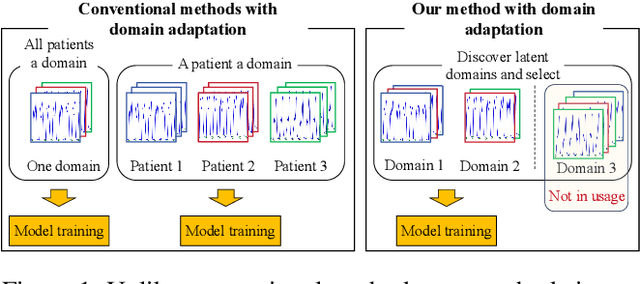
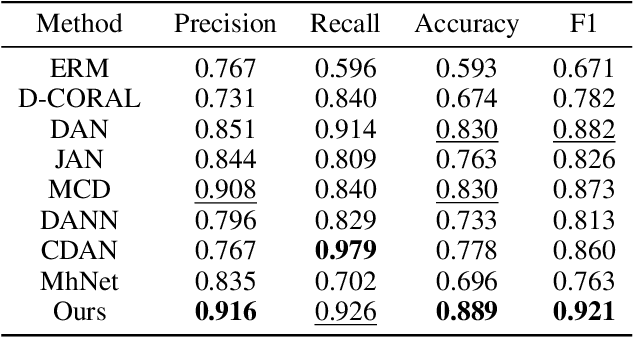
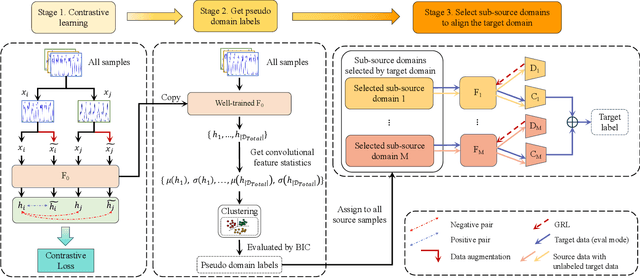
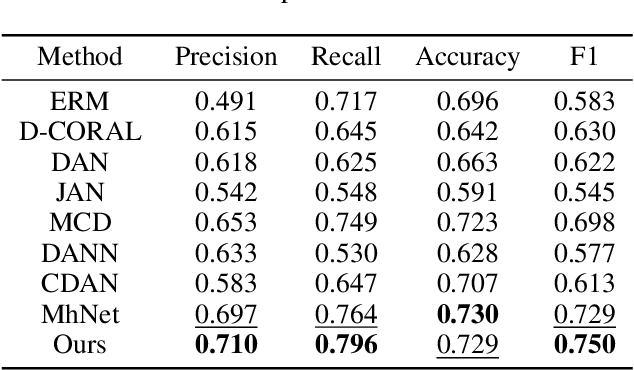
Abstract:Diabetic foot neuropathy (DFN) is a critical factor leading to diabetic foot ulcers, which is one of the most common and severe complications of diabetes mellitus (DM) and is associated with high risks of amputation and mortality. Despite its significance, existing datasets do not directly derive from plantar data and lack continuous, long-term foot-specific information. To advance DFN research, we have collected a novel dataset comprising continuous plantar pressure data to recognize diabetic foot neuropathy. This dataset includes data from 94 DM patients with DFN and 41 DM patients without DFN. Moreover, traditional methods divide datasets by individuals, potentially leading to significant domain discrepancies in some feature spaces due to the absence of mid-domain data. In this paper, we propose an effective domain adaptation method to address this proplem. We split the dataset based on convolutional feature statistics and select appropriate sub-source domains to enhance efficiency and avoid negative transfer. We then align the distributions of each source and target domain pair in specific feature spaces to minimize the domain gap. Comprehensive results validate the effectiveness of our method on both the newly proposed dataset for DFN recognition and an existing dataset.
ICHPro: Intracerebral Hemorrhage Prognosis Classification Via Joint-attention Fusion-based 3d Cross-modal Network
Feb 17, 2024


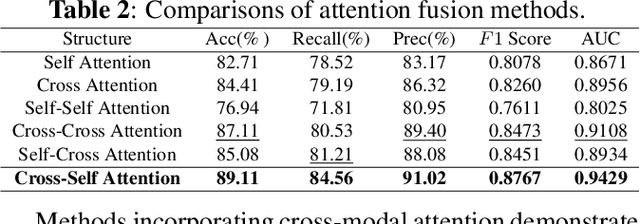
Abstract:Intracerebral Hemorrhage (ICH) is the deadliest subtype of stroke, necessitating timely and accurate prognostic evaluation to reduce mortality and disability. However, the multi-factorial nature and complexity of ICH make methods based solely on computed tomography (CT) image features inadequate. Despite the capacity of cross-modal networks to fuse additional information, the effective combination of different modal features remains a significant challenge. In this study, we propose a joint-attention fusion-based 3D cross-modal network termed ICHPro that simulates the ICH prognosis interpretation process utilized by neurosurgeons. ICHPro includes a joint-attention fusion module to fuse features from CT images with demographic and clinical textual data. To enhance the representation of cross-modal features, we introduce a joint loss function. ICHPro facilitates the extraction of richer cross-modal features, thereby improving classification performance. Upon testing our method using a five-fold cross-validation, we achieved an accuracy of 89.11%, an F1 score of 0.8767, and an AUC value of 0.9429. These results outperform those obtained from other advanced methods based on the test dataset, thereby demonstrating the superior efficacy of ICHPro. The code is available at our Github: https://github.com/YU-deep/ICH.
Improving Medical Report Generation with Adapter Tuning and Knowledge Enhancement in Vision-Language Foundation Models
Dec 07, 2023Abstract:Medical report generation demands automatic creation of coherent and precise descriptions for medical images. However, the scarcity of labelled medical image-report pairs poses formidable challenges in developing large-scale neural networks capable of harnessing the potential of artificial intelligence, exemplified by large language models. This study builds upon the state-of-the-art vision-language pre-training and fine-tuning approach, BLIP-2, to customize general large-scale foundation models. Integrating adapter tuning and a medical knowledge enhancement loss, our model significantly improves accuracy and coherence. Validation on the dataset of ImageCLEFmedical 2023 demonstrates our model's prowess, achieving the best-averaged results against several state-of-the-art methods. Significant improvements in ROUGE and CIDEr underscore our method's efficacy, highlighting promising outcomes for the rapid medical-domain adaptation of the vision-language foundation models in addressing challenges posed by data scarcity.
GCS-ICHNet: Assessment of Intracerebral Hemorrhage Prognosis using Self-Attention with Domain Knowledge Integration
Nov 08, 2023



Abstract:Intracerebral Hemorrhage (ICH) is a severe condition resulting from damaged brain blood vessel ruptures, often leading to complications and fatalities. Timely and accurate prognosis and management are essential due to its high mortality rate. However, conventional methods heavily rely on subjective clinician expertise, which can lead to inaccurate diagnoses and delays in treatment. Artificial intelligence (AI) models have been explored to assist clinicians, but many prior studies focused on model modification without considering domain knowledge. This paper introduces a novel deep learning algorithm, GCS-ICHNet, which integrates multimodal brain CT image data and the Glasgow Coma Scale (GCS) score to improve ICH prognosis. The algorithm utilizes a transformer-based fusion module for assessment. GCS-ICHNet demonstrates high sensitivity 81.03% and specificity 91.59%, outperforming average clinicians and other state-of-the-art methods.
A Neural Corpus Indexer for Document Retrieval
Jun 06, 2022
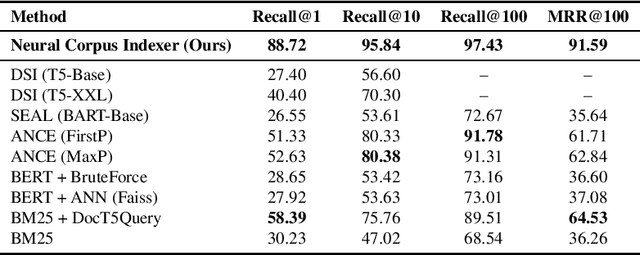
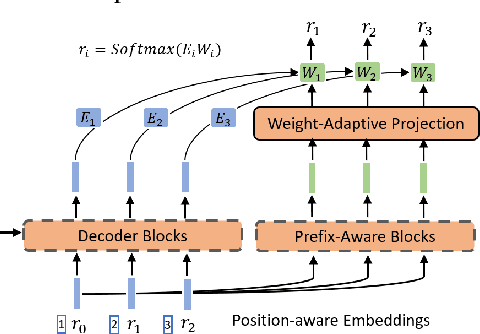

Abstract:Current state-of-the-art document retrieval solutions mainly follow an index-retrieve paradigm, where the index is hard to be optimized for the final retrieval target. In this paper, we aim to show that an end-to-end deep neural network unifying training and indexing stages can significantly improve the recall performance of traditional methods. To this end, we propose Neural Corpus Indexer (NCI), a sequence-to-sequence network that generates relevant document identifiers directly for a designated query. To optimize the recall performance of NCI, we invent a prefix-aware weight-adaptive decoder architecture, and leverage tailored techniques including query generation, semantic document identifiers and consistency-based regularization. Empirical studies demonstrated the superiority of NCI on a commonly used academic benchmark, achieving +51.9% relative improvement on NQ320k dataset compared to the best baseline.
Performance Evaluation of Edge-Directed Interpolation Methods for Images
Mar 26, 2013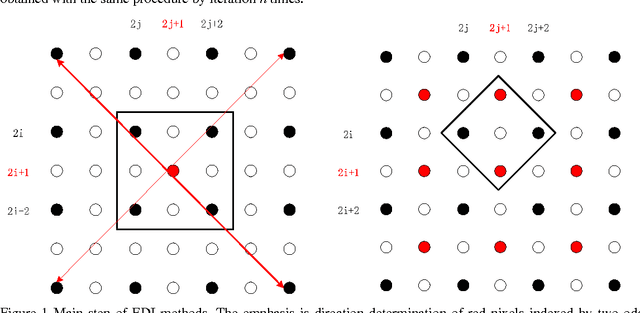
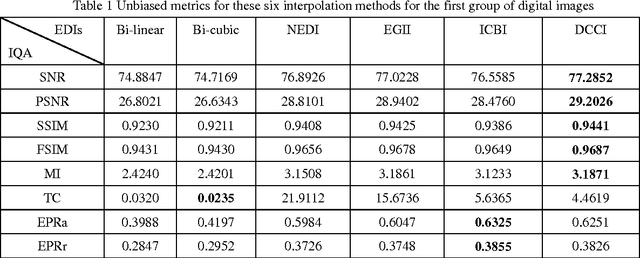
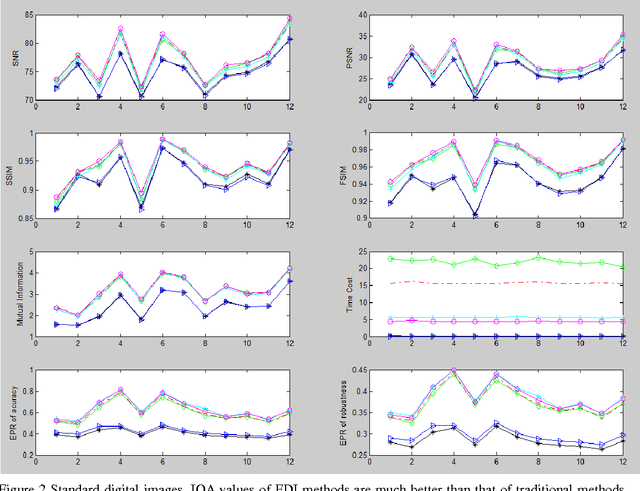
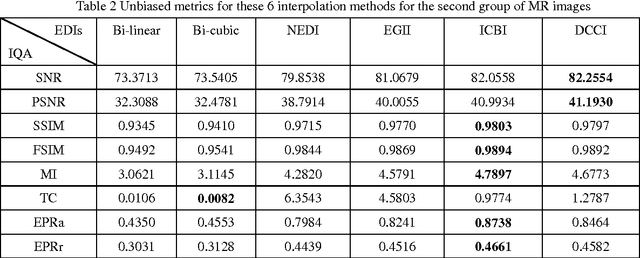
Abstract:Many interpolation methods have been developed for high visual quality, but fail for inability to preserve image structures. Edges carry heavy structural information for detection, determination and classification. Edge-adaptive interpolation approaches become a center of focus. In this paper, performance of four edge-directed interpolation methods comparing with two traditional methods is evaluated on two groups of images. These methods include new edge-directed interpolation (NEDI), edge-guided image interpolation (EGII), iterative curvature-based interpolation (ICBI), directional cubic convolution interpolation (DCCI) and two traditional approaches, bi-linear and bi-cubic. Meanwhile, no parameters are mentioned to measure edge-preserving ability of edge-adaptive interpolation approaches and we proposed two. One evaluates accuracy and the other measures robustness of edge-preservation ability. Performance evaluation is based on six parameters. Objective assessment and visual analysis are illustrated and conclusions are drawn from theoretical backgrounds and practical results.
 Add to Chrome
Add to Chrome Add to Firefox
Add to Firefox Add to Edge
Add to Edge